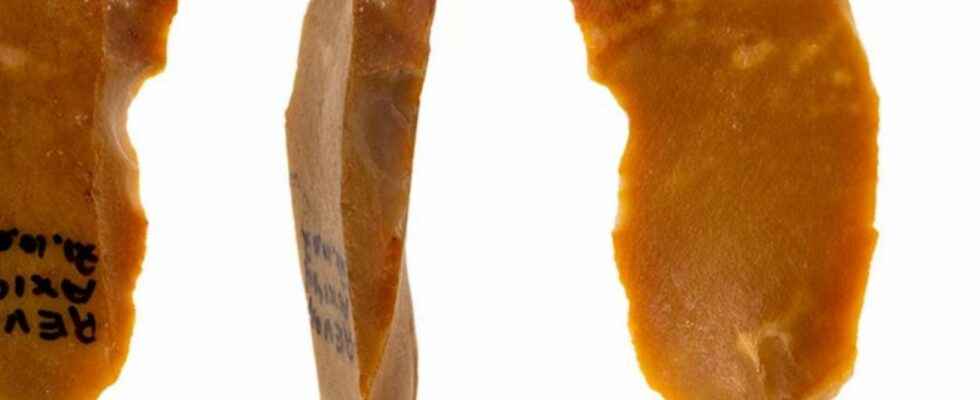How were memories transmitted in prehistoric times? A study reveals that men in the Near East recycled ancient cut stones and incorporated them into the set of tools they created, probably to preserve the memory of their ancestors.
You will also be interested
[EN VIDÉO] Learn to carve flint like in prehistory Flint knapping holds an important place in Mesolithic society, the prehistoric period. It was at this time that she benefited from the arrival of a new technique using a soft striker. Discover, during this video from Inrap (National Institute for Preventive Archaeological Research), how the first humans fashioned their tools.
The patina constitutes a chemical modification which occurred in particular on the tools used by prehistoric men. This patina forms over time under the influence of certain chemical and environmental conditions and affects various materials such as metal, glass and also several types of rock. Cut stones display this patina thanks to which the history of a tool can be, if not reconstructed, at least imagined.
Cut stone tools with a patina were “recycled” by Paleolithic men, particularly in the Near East
The differences between newly cut stones and older ones lie in their color and roughness. Previous archaeological studies have already highlighted the fact that cut stone tools with a patina have been “recycled” by men from the Paleolithicespecially in the Middle East.
Preserving the memory of old tools
A recent study published in the journal Scientific Reports analyzed the patinated objects present on the site of Revadim, in Israel, which dates from theUpper Acheulean and more particularly from between 500,000 and 300,000 years ago. The tools identified were used in particular for scraping surfaces and for cutting and they were found in association with bifaces and the remains of straight-tusked elephants. The authors explain that the tools they found on this site had two life cycles, separated by a long time interval. The first cycle concerns the design of the cut stone and its immediate use by the designers of the tool. The latter was then unused and probably discarded, which allowed it to acquire a patina.
The second cycle then began when someone found the patinated object and reshaped and sharpened it by exposing the stone under the patina. The authors are unable to explain whether these patinated stones were harvested by humans from the place of their ancestors or whether they were brought to the Revadim site by people from another locality. However, it seems that the selection, collection and recycling of these weathered stones were intentional. Such a recycling intention can obviously be motivated by economic reasons. The stone already has the form of a tool, it was functional and can become so again. The authors nevertheless suggest that the reuse of patinated stones was motivated by other reasons.
The authors indicate that among the tools that have been recycled, the shape of most has been little modified. The edges were sharpened but the majority of the objects were used, during their second life cycle, to scrape and scrape surfaces while some were intended for slicing, probably carcasses, during their first life cycle.
The authors interpret this as the desire of the people who collected the patinated objects to preserve these objects as much as possible while giving them perfect functionality. This incorporation of ancient tools among those of more recent populations could have been motivated by the technical power that they would have acquired during their first life cycle. The collection and preservation of these ancient tools would have made it possible to create and maintain a link of memory between the ancient human populations and recent. The conservation of these tools could also have made it possible to safeguard the route of an object through its functionalities, as well as the memory of the people who used it.
Interested in what you just read?
